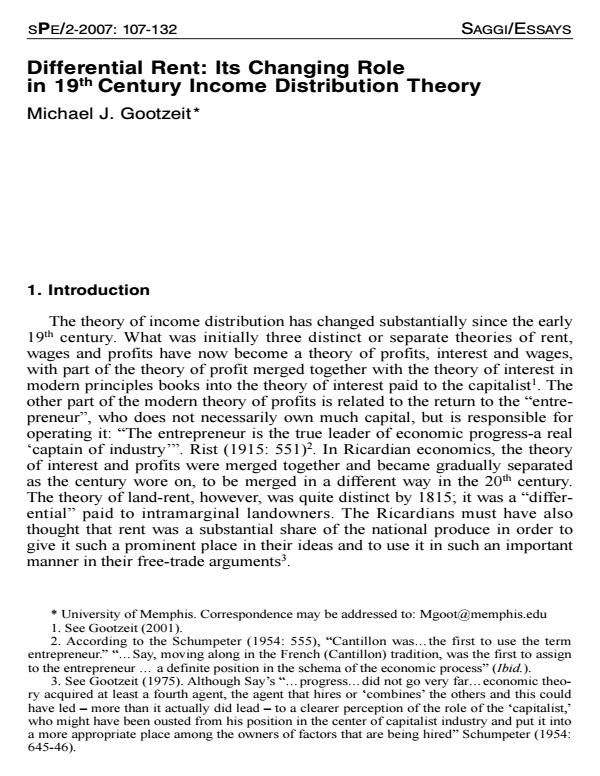Differential Rent: Its Changing Role in 19th Century Income Distribution Theory
Journal title STORIA DEL PENSIERO ECONOMICO
Author/s Michael Gootzeit
Publishing Year 2007 Issue 2007/2
Language English Pages 26 P. 107-132 File size 145 KB
DOI
DOI is like a bar code for intellectual property: to have more infomation
click here
Below, you can see the article first page
If you want to buy this article in PDF format, you can do it, following the instructions to buy download credits

FrancoAngeli is member of Publishers International Linking Association, Inc (PILA), a not-for-profit association which run the CrossRef service enabling links to and from online scholarly content.
<em>Differential Rent: Its Changing Role in 19th Century Income Distribution Theory</em> (by Michael J. Gootzeit) - ABSTRACT: The idea of economic rent started out in the early 1800’s as a differential surplus paid to agricultural landowners. During the later part of the century, it eventually evolved into more of a profit or excess return concept, also closely tied to wages and interest, as manufacturing came to dominate world economies. The merging of rent with the other three industrial income shares has so far been neglected in economics. This paper corrects this problem by illustrating how the concept of rent became part of the general theory of industrial income distribution as writers eventually debated the merits of the two competing views of distribution of that period: the wages-fund and the marginal productivity theories, with the latter gradually winning out.
Michael Gootzeit, Differential Rent: Its Changing Role in 19th Century Income Distribution Theory in "STORIA DEL PENSIERO ECONOMICO" 2/2007, pp 107-132, DOI: